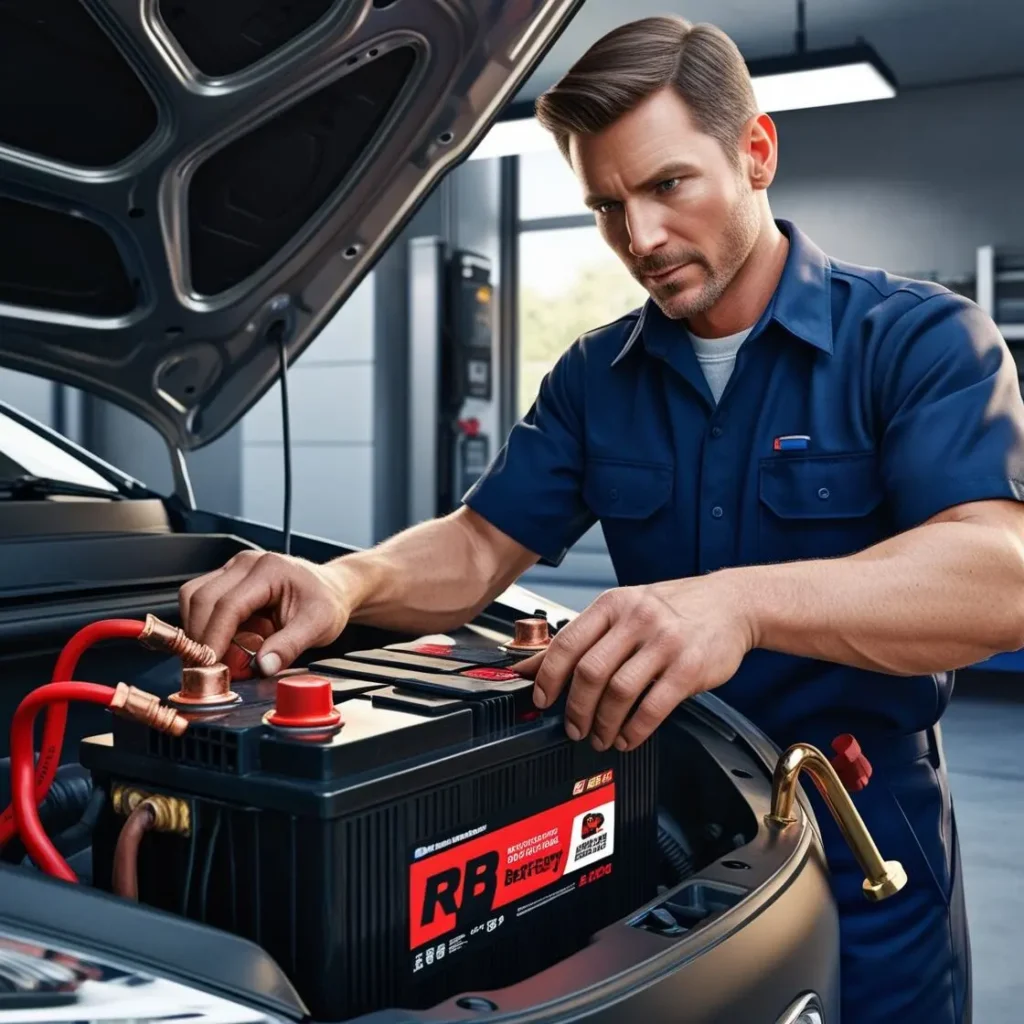Key Signs Your Car Battery Is Dying
Your car battery is the heartbeat of your vehicle’s electrical system. It provides the power necessary to start the engine and operate accessories like lights, radio, air conditioning, and more. Over time, even the best car batteries will begin to wear out and lose their ability to hold a charge. Being able to recognize the signs that your car battery is dying can save you from the frustration of unexpected breakdowns or worse—being stranded with a vehicle that won’t start.
In this comprehensive guide, we’ll dive into the key indicators that your car battery is on its way out. We’ll also discuss the typical lifespan of a car battery, what external factors can shorten its life, and why regular maintenance can help you avoid battery-related issues. Understanding the symptoms early can prevent bigger problems down the road, so let’s take a closer look at the warning signs.

Index
Slow Engine Crank: A Clear Warning Sign
The most immediate and obvious sign that your car battery is failing is when you hear your engine struggle to crank. Normally, when you turn the ignition key or press the start button, the engine fires up almost instantly. However, as the battery’s charge weakens, the starter motor will struggle to turn the engine over. You’ll notice the engine sounds like it’s running out of power as it cranks more slowly than usual.
This is typically one of the earliest signs of a deteriorating battery. The slow engine crank is caused by the car battery not having enough charge to power the starter motor efficiently. If you hear your engine hesitating or taking longer to start, it’s a good idea to get the battery tested right away. This can prevent being stranded by a completely dead battery, which may require a costly tow or an emergency roadside service call.
It’s important to note that, in colder weather, all batteries struggle a bit more to produce enough current to start the engine. However, if you’re experiencing a slow crank in normal temperatures or if it becomes a regular occurrence, then your car battery is likely nearing the end of its life.
Dim Headlights and Electrical Issues: Failing Power Delivery
Another major sign that your car battery is dying is dim or flickering headlights. The battery powers all of the electrical components in your vehicle, and when it starts losing its charge, these components will not operate as efficiently. The headlights will be the first and most noticeable electrical feature to show signs of a weak battery.
Headlights that seem to dim when you’re driving at night or when idling are clear indicators that your car battery is struggling. Dimming lights can pose a serious safety risk, especially when driving in low-visibility conditions, so this symptom should never be ignored.
Other electrical issues may arise as well. You may find that your power windows roll up or down more slowly than usual, or that your car’s air conditioning fan is weaker than normal. The radio or infotainment system may also cut out intermittently. These are all signs that your battery is losing the ability to power the various electrical systems in your vehicle.
Modern vehicles are equipped with many electrical components, so even a slight drop in battery performance can create noticeable changes in your vehicle’s functionality. If you’re noticing multiple electrical problems, it’s likely time to have your car battery tested.
Warning Light on the Dashboard: Pay Attention to Alerts
Most vehicles have a dedicated battery warning light on the dashboard, often shaped like a battery icon. If this light comes on while you’re driving, it means that your vehicle’s charging system is malfunctioning. The issue could be with your car battery, the alternator, or other parts of the electrical system.
It’s important to understand that the battery warning light doesn’t always mean your battery is the problem. Sometimes, it could indicate an issue with the alternator, which is responsible for keeping your car battery charged while the engine is running. In some cases, it could also be a problem with the electrical connections or wiring. However, if this light comes on and you’re experiencing other symptoms—such as dim headlights or slow cranking—then the battery is likely the culprit.
Either way, if the battery warning light comes on, it’s important to get your vehicle checked by a mechanic. Ignoring this warning could result in your car stalling or the battery completely dying, leading to more extensive repairs.
Frequent Jump Starts: A Failing Battery
If you’ve had to jump-start your car more than once in a short period of time, it’s a clear indication that your car battery is no longer holding a charge effectively. While a jump-start can temporarily get your car running, it’s not a long-term solution. A healthy battery should be able to maintain a charge without the need for frequent jump-starts.
If your vehicle needs a jump-start once, that might be due to leaving the lights on or some other isolated incident. However, if jump-starts become a regular occurrence, you’re dealing with a battery that’s on the verge of complete failure. Relying on jump-starts not only puts stress on your vehicle’s electrical system but can also damage components like the alternator if overused.
It’s essential to replace a battery that frequently requires jump-starting to avoid further damage to your vehicle and prevent unexpected breakdowns. Newer batteries come with indicators that change color when they need to be replaced. So, if you’ve already experienced several jump-starts, it’s time to head to the mechanic.
Corrosion and Swollen Battery Case: Visible Red Flags
Physical signs on the battery itself can also indicate it’s time for a replacement. One of the most common visible signs is corrosion around the battery terminals. Corrosion appears as a white, chalky substance on the metal parts of your battery. This can prevent the battery from effectively transmitting power to the vehicle’s electrical components, and cleaning it off only provides a temporary solution.
In addition to corrosion, you may notice that the battery case looks swollen or bloated. This can happen due to excessive heat, which causes the battery’s internal components to expand. A swollen battery case is a serious issue that indicates the battery is damaged and should be replaced immediately. Using a swollen battery can be dangerous as it may leak acid or, in rare cases, even explode.
The Age of the Battery: Knowing When to Replace
Perhaps the most reliable indicator of when to replace your car battery is simply its age. Most car batteries have a lifespan of three to five years, depending on the quality of the battery, your driving habits, and the climate in which you live. As the battery ages, its ability to hold a charge diminishes, and it becomes more prone to failure.
If your battery is more than three years old, it’s wise to start paying closer attention to its performance. Some drivers proactively replace their batteries every three to four years to avoid potential issues, especially if they live in extreme climates. Hot weather, in particular, can cause the fluid inside the battery to evaporate, shortening its lifespan.
You can also have your car battery tested regularly to determine its health. Many auto shops offer free battery testing, which can give you a sense of whether it’s still holding a strong charge or if it’s time for a replacement.
Environmental and Driving Factors: How They Affect Your Battery
In addition to the battery’s age, certain environmental and driving factors can accelerate its wear and tear. Extreme weather conditions, particularly heat, are among the most damaging factors. High temperatures can cause the battery fluid to evaporate, leading to corrosion and diminished performance.
Short trips are another factor that can negatively impact your car battery. When you drive short distances, the battery doesn’t have enough time to fully recharge between trips, which can cause it to lose power over time. If you frequently make short trips, your battery may not last as long as it would for someone who drives longer distances regularly.
Cold weather can also pose problems, as low temperatures can reduce the battery’s ability to produce sufficient current to start the engine. If you live in an area with harsh winters, you might notice that your battery struggles more during cold spells.
Conclusion
Understanding the signs that your car battery is dying can save you from unexpected breakdowns and costly repairs. Whether it’s a slow engine crank, dim headlights, or the need for frequent jump-starts, these symptoms should never be ignored. Regularly checking the physical condition of your battery, such as looking for corrosion or a swollen case, can also give you an early warning that it’s time for a replacement.
Additionally, keep in mind that the age of your car battery plays a significant role in its performance. Once your battery reaches the three-year mark, it’s important to monitor its health more closely and consider replacing it if you notice any warning signs. Proactive maintenance and regular testing can help ensure that your car runs smoothly without any electrical issues.
By staying informed about the condition of your car battery, you can avoid inconvenient breakdowns and ensure that your vehicle remains reliable, regardless of weather conditions or driving habits.
Read more about auto maintenance by clicking here.
